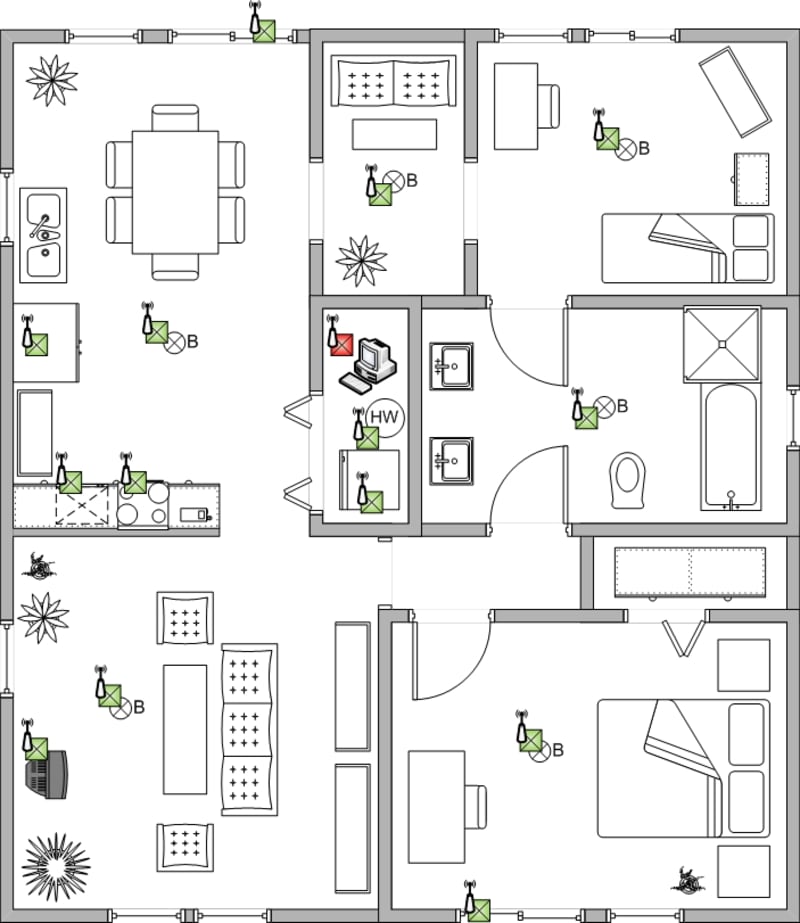An intelligent building has the ability to monitor its indoor and outdoor environment and control the installed systems (e.g. air-conditioning, ventilation, heating) for ensuring the occupancies comfort level with minimum energy consumption. There are different solutions of building automation existing on the market nowadays, and most of them are based on wired communication. Even so, not all electronic devices existent into a building could be connected for automation.
We propose a solution based on wireless communication, due to the advantages offered by this type of communication (mobility, scalability and easy implementing): an attachable wireless ‘hook’ module with the capability to process and transmit/receive wirelessly information.
For being able to communicate with the electronic devices it is necessary that the manufacturers provide a small socket with a standardized interface which to allow the communication of the wireless module with the electronic device. A simple solution of plug & play would be used to attach the wireless module to this socket. The necessary energy necessary for the wireless module to work would be provided by the electronic device. In this way it is also solved the problem of energy consumption. Each electronic device would be described by a list of properties, events and possible actions. The characteristics of each device have to be represented by a software library, defined for each electronic device type.
All wireless modules connected to the existent electronic devices from a building form a network, having as base component a coordinator node connected to a computer. From the computer, using a dedicated software application it will be possible to define events for all electronic devices interconnected into the network (e.g. turn off the TV or cooking machine when the occupancies have left the home). A user friendly interface will permit to any user, with minimum knowledge about automation, to do the configuration.
Since ZigBee protocol become a standard for Wireless Sensor Networks (WSNs) it could be used and for this example too.
Each wireless module will be formed by a radio communication unit, a processing unit and a standardized interface to create the link with the electronic device. Different versions of wireless modules could be implemented but all of them should respect the same communication rules.
The interoperability of the electronic devices will be ensured as long as they could be connected together, and this will increase the comfort of the occupants, safety and will save valuable energy.
Like this entry?
-
About the Entrant
- Name:Catalin Bujdei
- Type of entry:individual
- Software used for this entry:Ms Office Visio
- Patent status:none





